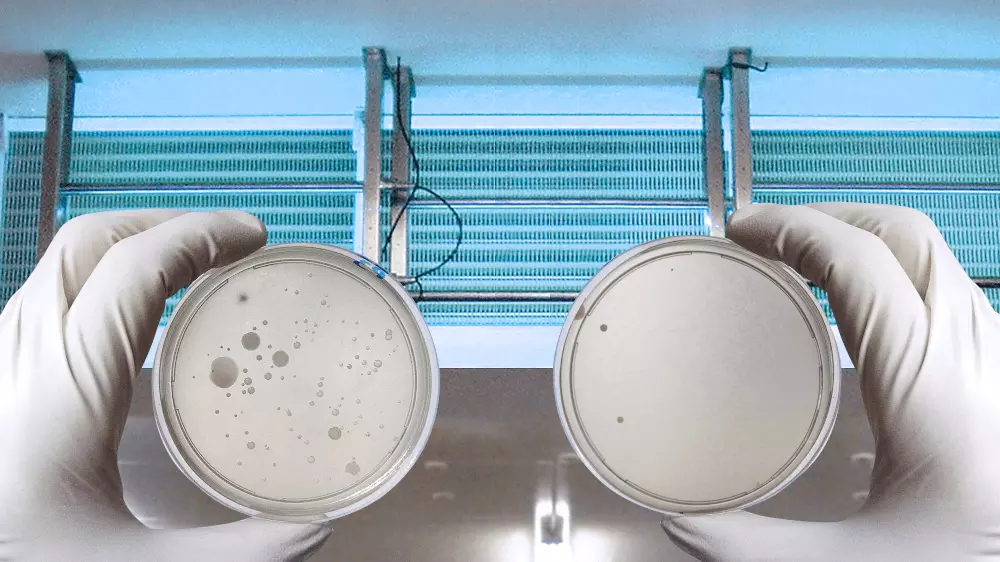Knowledge: Evaporator disinfection with UVC light: theory, practice and other considerations


An evaporator is a cold and humid environment, so in some situations it can be contaminated with micro-organisms. Cold-loving bacteria such as Listeria survive well in this cold and moist environment.
In time, a biofilm of bacteria will form in the drip tray and on the fins of the evaporator. When there is a high concentration of moulds and yeasts in the air, we also see that evaporators become mouldy.
Companies that use evaporators in sensitive areas, usually the food industry, often choose to clean evaporators regularly if the contamination becomes visible or measurable. In this article we discuss the option of equipping evaporators with UVC lamps in order to prevent the growth and spread of micro-organisms. Preventing problems in this case is better than fixing it after they arise.
UVC light is able to destroy micro-organisms, that process is explained here. The application of this in an evaporator is theoretically simple and in practice often more complicated.
The main technical requirements:
The fins of an evaporator are usually made of aluminium and that is beneficial. reflects UVC radiation very well. Therefore, when properly placed, the disinfecting effect is effective throughout the evaporator.
UVC lamps are often placed in the endplate of the evaporator so that they are perpendicular to the fins. Evaporators come in all shapes and sizes, it is important to select the right UVC lamp that fits well with the length of the evaporator. Long lamps should be supported to prevent breakage.
It is important to think about placing and removing the lamps. After the lifetime of the lamp, it must be replaced and it is convenient if the entire evaporator does not have to be disassembled. Most UVC lamps suitable for evaporator installation have a lifetime of 12,000 burning hours.
An evaporator with built-in UVC light entails risks. UVC light is dangerous for skin and eyes, you can read more about this here. We distinguish three groups of people who are at risk:
They are on the work floor for a longer period of time and it is important to be sure that if stray light is present, it is not harmful. This can be done by:
The costs for installing UVC lamps consist of fixtures, lamps, support in stainless steel 304 and installation.
Example calculation:
For an average evaporator of 160 cm wide, 50 cm high, single-sided discharge and sufficient space for the installation of UVC lamps:
Prevent that recall, improve your company hygiene and save on your cleaning costs. Contact us for an appointment.
Photos of various evaporators equipped with UVC lamps (built-in or front mounting frame)